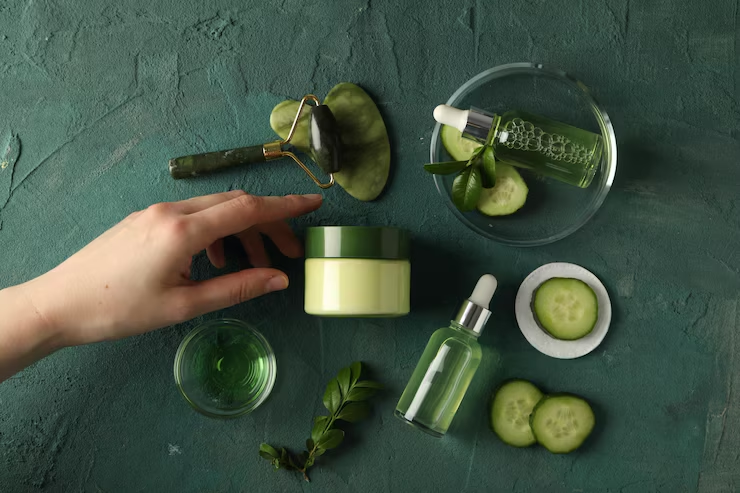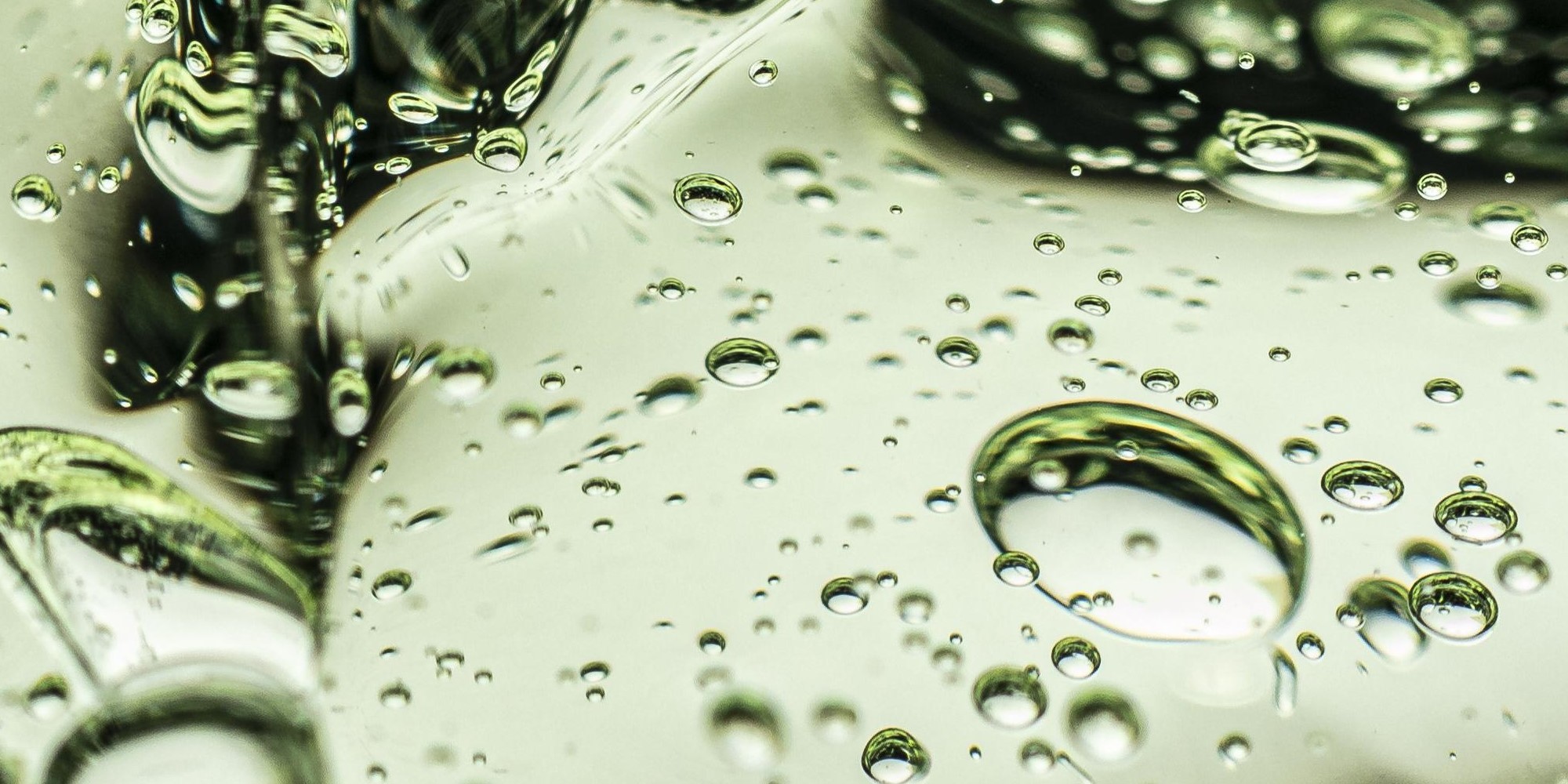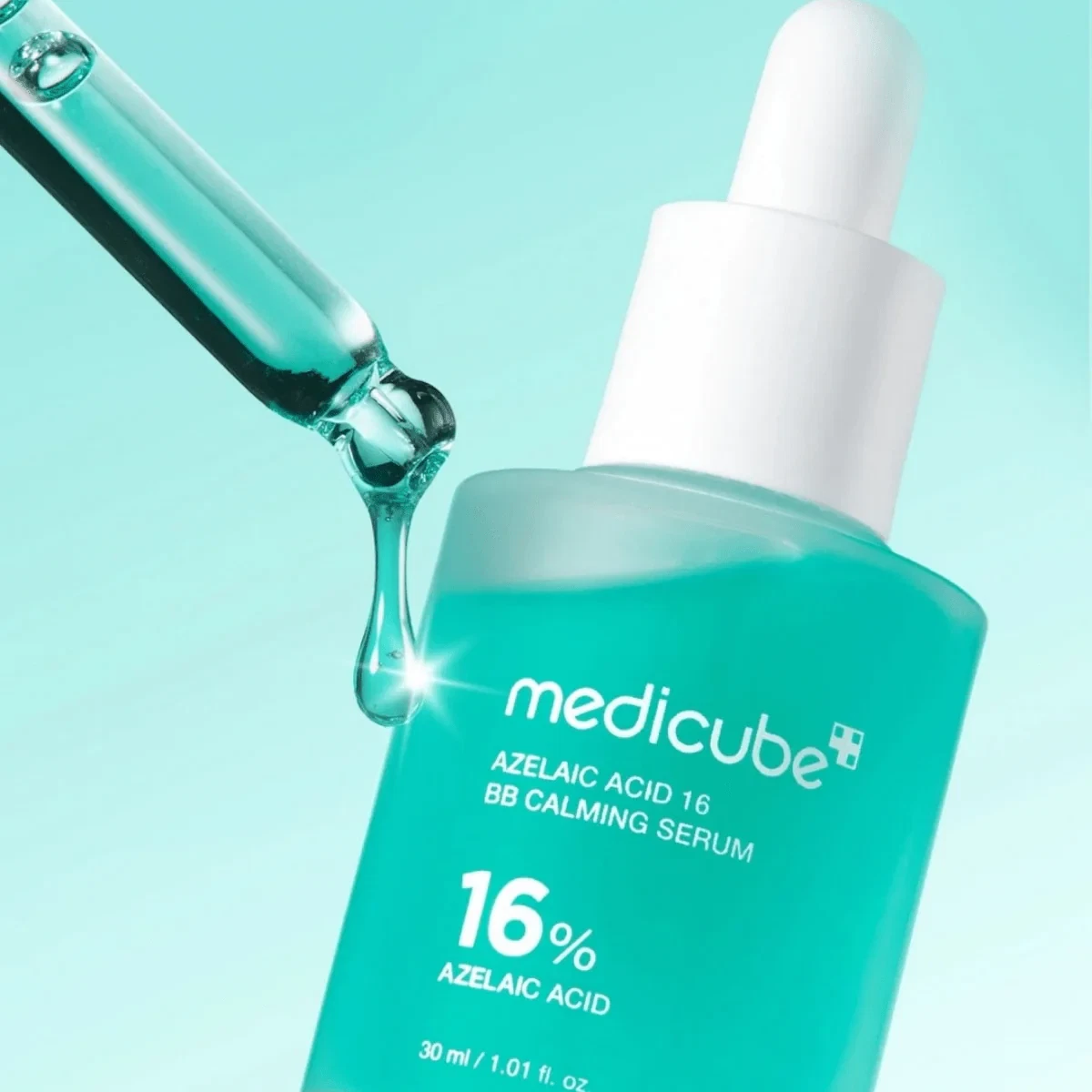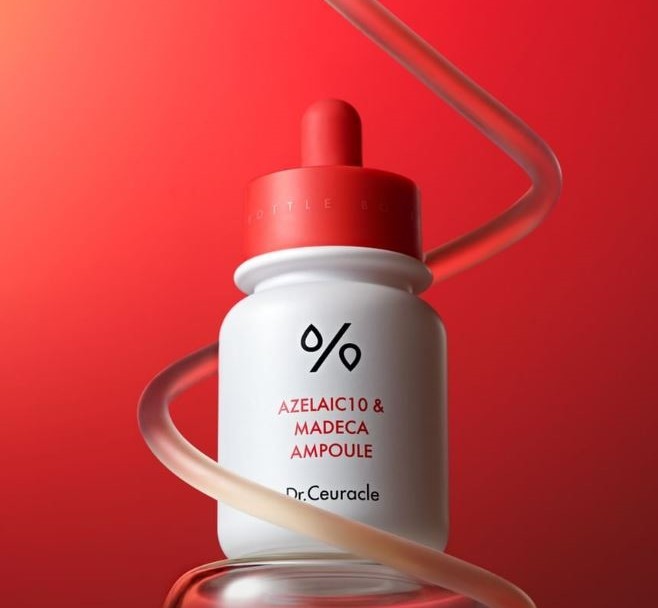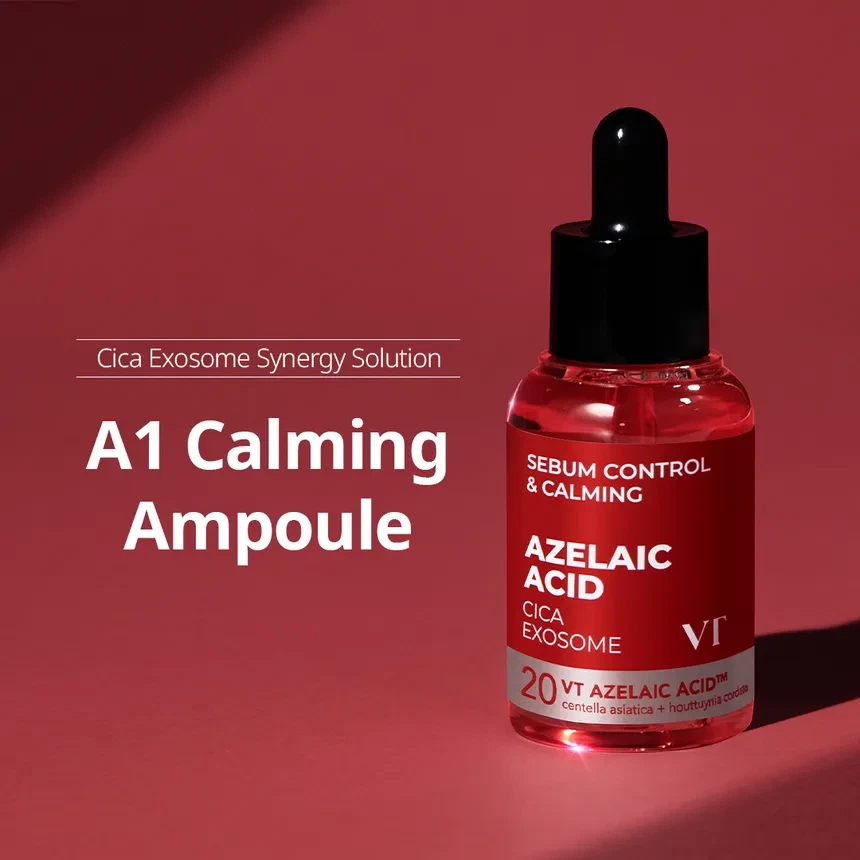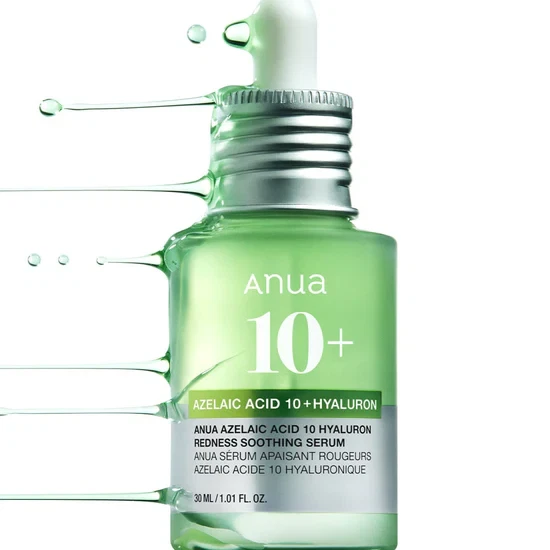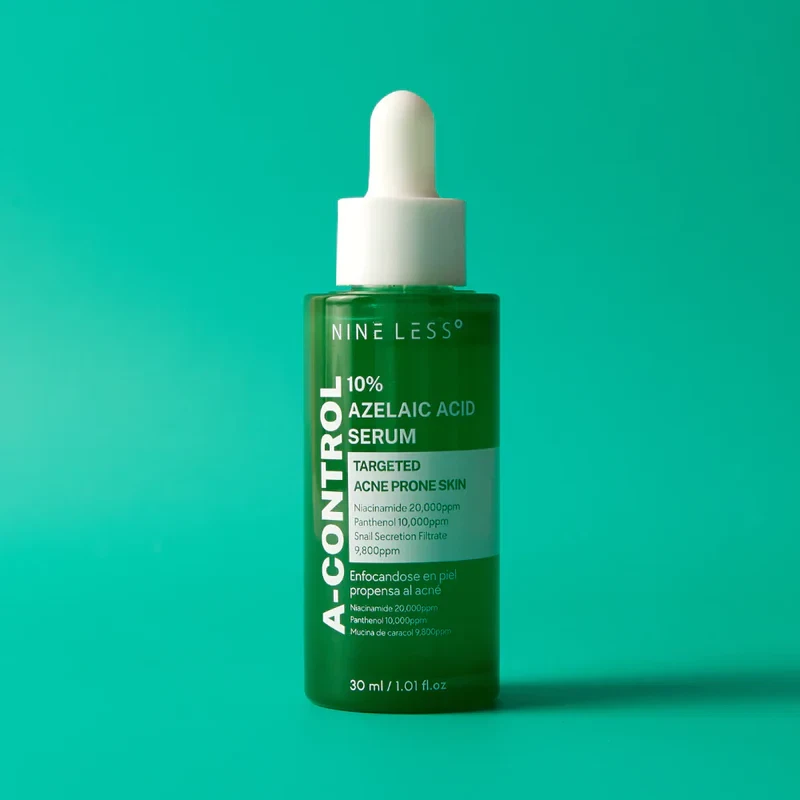
Azelaic Acid – How to Manage Acne, Rosacea and Pigmentation with One Soothing Active
What is Azelaic Acid?
Azelaic acid has been on the rise as a treatment for acne and irritated skin since 2024. First synthesized by yeast to protect itself against bacteria – it works hard to destroy acne-causing bacteria on the skin. This alone is exciting, but it also eats damaging particles (free radicals) on the skin that causes irritation and cell mutation, reduces the harmful action of our immune system (reducing redness and irritation) and also stops pigment formation (reducing hyperpigmentation and pigmentation due to inflammation and acne).
Essentially, in one little package – this acid:
- reduces harmful bacteria
- stops inflammation and redness
- reduces hyperpigmentation
- protects our skin from damage
It has even been shown to fight cancer cells – although this treatment is still being tweaked in clinical trials.
So, with this in mind – in regards to our skin, it is rapidly becoming an ideal treatment for acne (mild-to-moderate), rosacea (due to its strong effect at calming skin inflammation and redness) and melasma (reducing pigment formation). It also has a low irritative index and is only not recommended for people directly allergic to it.
Who Should Not Use Azelaic Acid?
It’s a wonderful acne treatment – in some studies it was on the same level as tretinoin, without nearly the same drying and irritating side effects. It does take longer to take effect (for rosacea can take up to 12 weeks) and can lead to skin lightening in strong doses (so be wary of the areas you are using it in if you have naturally darker skin).
It’s safe in pregnancy, in more sensitive skin (where retinol may be far too irritative) or in milder skin conditions where using retinol might be too aggressive.
Although it’s a smaller number, there are definitely people who have a reaction to azelaic acid. It’s most common in people who have eczema or irritant contact dermatitis – so anyone who uses the cream and experiences sudden redness, itching, a burning feeling or drying/scaling should stop using it right away.
Azelaic acid of stronger doses can lead to some mild redness or burning in first few instances – but this is still rare, so be careful in using it!
How to Use Azelaic Acid
Azelaic acid products can be added easily to your routine after cleansing and toning steps of skincare. Use the amount the size of a pea, add to your fingertips and gently disperse across your face, avoiding eyes and mouth and ensuring good coverage in areas of acne or redness.
Ensure you follow up with a good moisturizer and SPF+ - although azelaic acid does not increase sun sensitivity, redness in skin always indicates you should be using a great sunscreen for protection.
It can be used morning and evening in your routine – especially in lower dose products, although you should just start with it in your evening routine (and always start with a spot test on your hand) to ensure your skin is happy to absorb it.
It's also important to dry to always apply to dry skin - as wet skin increases its absorption and can lead to instant irritation, especially if you are just starting out your doses. So if you are using it after toner, wait the extra time for your toner to dry before applying.
Unlike some fashionable products, results can be slow – and can take up to 1-2 months to show strong, steady results, but it’s a really central product for long-lasting and safe results. It can also lead to a period of purging, due to its natural exfoliation, so don’t be alarmed if you suddenly have a breakout a few days later.
To manage purging, make sure you are using a great cleanser and when using cleansers ensure you are gently massaging for up to a minute to make sure you are clearing dead skin cells for healthy pores.
Top 5 Azelaic Acid Serums in K-Beauty
According to Australia’s TGA (that helps regulate medications and cosmetics), they are mostly comfortable with azelaic acid concentrations of 10%. This is well documented to be safe for use without a dermatologist's input and yields good results with low side effects.
5. Medicube Azelaic Acid BB Calming Serum
Looking for hydrating, calming and soothing? This serum has it all! With a whopping 16% azelaic acid, Medicube has enriched this serum with a variety of botanical extracts to boost soothing with effectivity. Enriched with neem tree extract, turmeric, panthenol and ceramides - it manages to bring the deep might of azelaic acid, whilst also hydrating and soothing. If you are beginner to azelaic acid, it might be too strong to start with - but it's a powerful addition to K-beauty's azelaic acid lineage.
4. Dr Ceuracle Azelaic 10 & Madeca Ampoule
Another famous ampoule with 10% azelaic acid, ready to fight acne and irritation is the Dr Ceuracle Azelaic 10 & Madeca Ampoule. Designed with soothing, lightening madecassoside (extracted from cica), this ampoule gently exfoliates away excess sebum and dead skin cells, allowing deeper relief of acne. This formula is ultimately gentle, soothing and relieving – making it ideal for dry, oily or sensitive skin types.
3. VT Cosmetics A1 Calming Azelaic Acid Serum
For lower doses of azelaic acid, designed for more sensitive skin – there is the VT cosmetics A1 Calming Ampoule. It’s mixed with a lower concentration of azelaic acid with exosomes of centella asciatica that deeply penetrate layers of skin to soothe, hydrate and stimulate cell repair. It’s the lightest weight serum, absorbs incredibly quickly and is also low pH to help refresh skin barrier and encourage a healthy biome. If you have very reactive skin, a lower dose azelaic acid may be better for your skin type.
2. Anua Azelaic Acid 10 + Hyaluron Redness Soothing Serum
Another well-rated product with azelaic acid is Anua’s Azelaic Acid 10 Hyaluron Redness Soothing Serum. This serum also contains 10% azelaic acid but is also mixed with three weights of hyaluronic acid to boost hydration of skin (so is a great addition to dryer skin types). It also is mixed with green tea extract, aloe vera and centella asciatica extracts to help soothe irritation and redness and is designed to work well with sensitive or irritated skin. The essential oils can lead to irritation in those that are sensitive – but generally the Anua serum is designed to be more gentle for sensitive skin than the Nineless.
It is also fungal acne safe - so if FA is your current struggle, this is an ideal addition to your routine.
1. Nine Less 10% Azelaic Acid Serum
The top product we recommend for classic acne and redness care is Nineless A-Control 10% Azelaic Acid Serum. It comes with not just 10% azelaic acid, but it’s mixed with snail mucin and niacinamide – both soothing and brightening products that help even and maintain skin tone. It has a great balance of ingredients to help soothe and calm the skin barrier – with protective panthenol and glycerin, whilst azelaic acid does its work. It can be used for a long time with minimal irritation and also helps keep skin nicely hydrated. It also reduces hyperpigmentation and helps clear pigment associated with acne scarring – giving it a great long-term benefit to have in your routine.
It's not recommended for fungal acne, however, so if you are struggling with FA be sure to use an alternate azelaic acid source. Read our review here!
Nineless has a whole line of azelaic acid products available – if you’d prefer to incorporate it into different elements of your skincare (i.e. their Azelaic acid Toner or Azelaic acid Cream).
No matter which azelaic acid serum/ampoule/toner or cream you use, azelaic acid is a very useful tool in your skincare journey. If you have a favourite that hasn’t made the list, let us know in the comments as we’re always excited to discover new products.
All these products are available right now on Arktastic – your home for the best of K-beauty!
If you are looking for more skincare tips read our blogs on similar topics:
How to Care for Oily Skin: Avoiding irritation, Large Pores and Breakouts
How to Harness Retinol – Avoid the Burn and Replenish Your Glow
Healing Acne Scars – Pro Techniques for Smoother, Clearer Skin
FAQs - Azelaic Acid
Is azelaic acid safe for skin?
Yes! Azelaic acid is a very safe molecule for topical use. It is an acid, so it can cause a mildy burning feeling or redness (especially in higher doses), but for a low dose serum it is very safe for general use. Make sure you start with a low dose to start, so your skin doesn’t have a strong reaction to it – and slowly build up your tolerance.
Can I use azelaic acid with other actives?
Remember that azelaic acid is an active exfoliant – so, although you can use it with other exfoliants (AHA, BHA, PHA) try not to use too many at once as it can lead to worsened skin irritation. If you also use Vitamin C or retinol, try to use these on alternate days to azelaic acid or use azelaic acid in the mornings only and the other actives in the evening.
How can I tell if azelaic acid is working?
It does take some time, but azelaic acid should be working to help recover and calm. Although, there might be an initial purging period – this should be recovering after 1 week and calming down. You should notice less blemishes, red spots and pigmentation. After 4 weeks, you should notice reduced redness and skin irritation. For best results make sure you are cleansing and moisturizing your skin in good balance.







